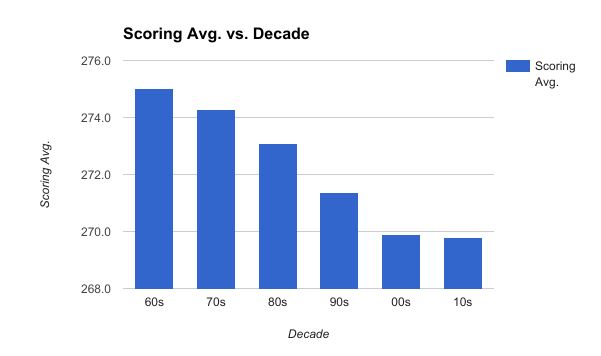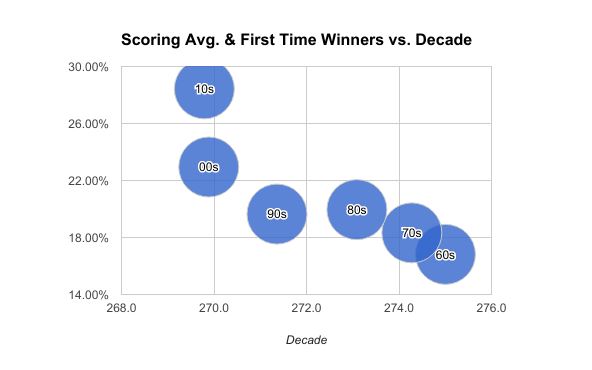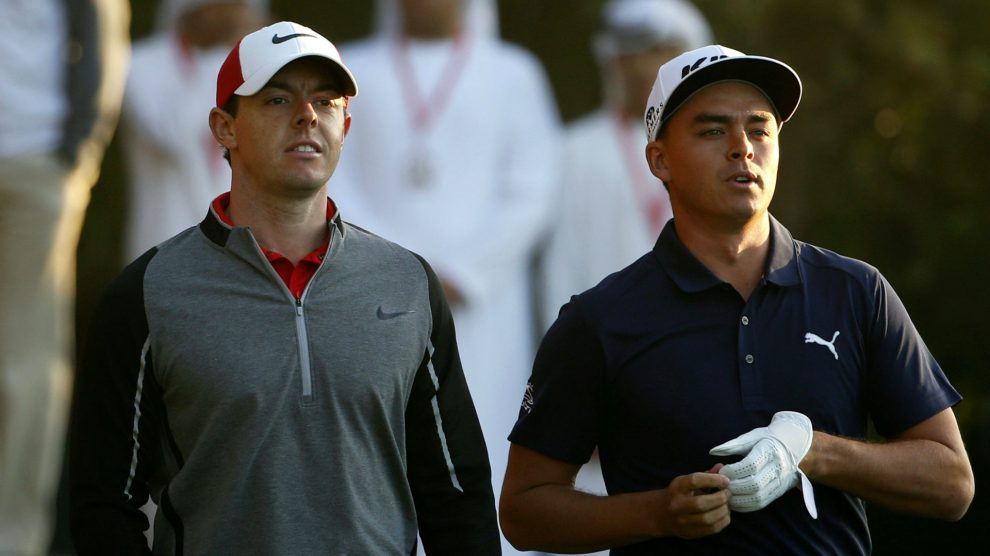Statistics tell stories. They exist to provide a metric for comparison; that's really it. The sole purpose of keeping track of data is to compare some person or moment or advancement with a thing of the past. Golf is no different.
We keep putting and driving stats so that we can look at them in the present and later down the road and compare the old data with the new. It provides context to what we're looking at that moment. How do we know that Jordan Spieth's 2015 Masters victory was a historic win? Because we know Tiger Woods set the previous scoring record in 1997 and, at the age of 21, Spieth tied that 72-hole scoring record.
Data is important because we need the context to determine how historically significant something is. When Justin Thomas shot 59 this year, it was significant because it was a 59. But it was more significant because he was only the eigth person to do that on the PGA Tour. It was only the ninth sub-60 round on the PGA Tour, and he's 23. Nine days later, Adam Hadwin did the same thing.
Without knowing the past data, Thomas' and Hadwin's 59s are simply amazing rounds in the present. They are something we talk about for a few days and then it sort of floats to the ground like sand from a bunker shot. But because we know the first person to shoot that score was Al Geiberger in 1977, and then it was 14 years before it happened again when Chip Beck did it in 1991, it's important.
We look at the increased number of sub-60 rounds on the PGA Tour in the last decade, and I wondered how scoring had more broadly changed going back to the earliest days of the PGA Tour. I had a hypothesis that the scoring average hadn't really changed all that much. Maybe it had gone down a little, but I felt pretty strongly that with the advancements in technology the courses had increased their defenses to protect against super low scoring.
Yes, in the last seven years we've had seven of the ten sub-60 rounds in PGA Tour history, but surely the scoring average hadn't gone down that much. The players can't really be that much better across the board, can they
After studying the data from all 2,558 tournaments on the PGA Tour from 1960 to 2016, I have drawn a conclusion: Players have, in fact, gotten quite a bit better. You're probably thinking, "This guy is an idiot, of course, players have gotten better! They hit the ball 330 yards!"
Maybe that's a fair statement, but I'll point you to my distance study in a previous column to answer that observation. I knew players had gotten better, but my thoughts were that players had gotten better as a population, meaning the depth of talent was deeper. But I didn't think it would affect the scoring average. It turns out; I was half right.

When we look at scoring average by decade, we can get a good feel for the scoring trend aligned with the changes in technology, more on the innovations in technology later.
As you can see, the scoring average in the 1960s (the height of Palmer and Player and the rise of Nicklaus),right at 275. (These numbers are taken only from 72-hole stroke play events.)
In the '70s it dropped slightly to 274.3, but that makes sense because there weren't many significant changes to the game. The '60s saw the Ping Karsten putter that revolutionized how putters would be made for the next 50 plus years, but that was the major innovation of the decade.
However, by the late 1980s, the scoring average had dropped to 273.1, over a full shot lower. The '80s was also the time when we see the first metal woods arrive on tour (Ron Streck was the first player to use a metal wood in a PGA Tour event).
The next leap is much bigger. By the end of the '90s, we see the scoring average drop nearly two full shots to 271.4. The '90s brought huge leaps in technology with the Callaway Big Bertha driver, the Titleist Professional golf ball, Adams Tight Lies and Taylormade Rescue clubs -- the advent of titanium and more graphite.
As the technology changed in the '90s and players began to place new equipment in their bags, the scoring average for the 2000s dipped below 270 for the first time and came in at 269.9. If you're following along, you'll notice that over five full shots since the 1960s. When you're talking about almost 450 tournaments per decade, that's a huge drop. The players had gotten better, by a long shot. My hypothesis was wrong. At least the first half of it.
When we also take a look at first-time winners by decade, we notice the opposite trend. If scoring average had gone down, the percentage of first-time winners had gone up.
In the 1960s there were 446 tournaments, 75 of those tournaments were won by first-time winners on tour. As you can see, that's a little under 17 percent.
In the 1970s that had gone up from 75 first time winners to 81 with four fewer tournaments. For some strange reason, the percentage dropped from the '80s to the '90s. However, the trend picks back up in the 2000s when it spikes to just under 23 percent, with 109 first-time winners in 475 tournaments.
In our current decade, the figure has spiked to nearly 29 percent. Since 2010, we've had 306 tournaments, and 87 of those were won by first-time winners. This half of my hypothesis was correct. I figured there would be the first-time winners as we inched closer to the present, partly because I've witnessed so many of them over the past several years.
| Decade | Scoring Avg. | First Time Winner % |
| 1960s | 275.0 | 16.82% |
| 1970s | 274.3 | 18.33% |
| 1980s | 273.1 | 19.95% |
| 1990s | 271.4 | 19.64% |
| 2000s | 269.9 | 22.95% |
| 2010s | 269.8 | 28.43% |

What does this all mean? I think it means a couple of things.
- The equipment innovations have allowed players to shoot lower scores by decreasing shot dispersion and increasing the distance the ball flies on all clubs, not just the driver. Ben Hogan was said to hit his 7-iron about 140 yards. Today I can go to a store, pick up a Taylormade M2 7-iron, walk into a simulator, and the number reads 182-yard carry distance.
- The second reason is that the professional game has become more lucrative than just about any other career a top golfer in the world could choose. In the 1960s, we were still in the era where a professional golfer would earn less a savvy car salesman. In today's world, you'd have to own about five car dealerships to earn as much money as a mid-level tour player. I'm not saying that players play the game for the money, but the money is great enough that the best players are not discouraged from pursuing a professional career as they once were.
We've not only seen a flood of great young talent winning because the equipment is better, but we've also seen it because the junior game has improved around the world and the opportunity to play golf is so much more open than it ever has been. Yes, golf is still expensive to play, but youth programs and tours are beginning to see the fruits of their labor with a budding new generation on tour.
The thing I had missed before I started this project was that, yes, players had gotten better. However, the incessant need to lengthen courses, speed up greens and grow rough has only caused players to get better. And as players get better, the young kids with aspirations of hoisting a major championship trophy only practiced harder and got better. As you can expect, as the scoring average for all tournaments dropped, so too did the scoring average for the majors.
So, how much have players improved since 1960? The statistical answer is about 5.5 strokes on average and over six strokes in the major championships. The historically significant answer is about 10 percent. Since 2010 we've had more first-time winners on tour through this point in the decade than in any other since 1960. I'll let you provide the context for the improved scoring average and more frequent first-time winners.

